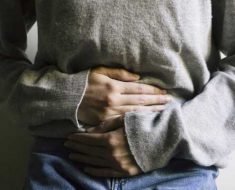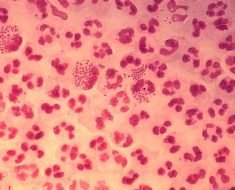As the coronavirus disease 2019 (COVID-19) pandemic has swept across the world, frantic efforts have been made to identify the effective drugs and use them in the right measure, to counter the severe cytokine storm and systemic hyper-inflammatory response that followed infection with the severe acute respiratory syndrome coronavirus 2 (SARS-CoV-2) in many cases.
A new paper focuses on the role of corticosteroids, in particular, as these were widely used among patients on intensive respiratory support (IRS).
.jpg)
Background
This pattern followed the publication of results from the UK RECOVERY trial, that indicated patients with COVID-19 who were on invasive mechanical ventilation (IMV) experienced greater benefit compared to others.
Despite this limitation, many patients have received steroids in the early phase of infection. The current study, available on the preprint medRxiv* server, indicates that this is a less than desirable trend in some subgroups of patients.
How was the study done?
To this end, they analyzed data from the Department of Veteran Affairs (VA), which is the largest integrated healthcare system in America, caring for a large group of diverse patients. In order to compare those who received steroids with others, they restricted the analysis to those who did not receive IRS.
The cohort included approximately 9,000 patients, almost all male, and just over a quarter of whom were Black. The median age was 71 years. The majority were admitted within 24 hours of infection.
More than half the patients were put on steroids, 95% of them on dexamethasone, within 48 hours of admission. This group also received remdesivir and prophylactic anticoagulants more frequently, at approximately 40% and 33% vs. 13% and 20%, respectively.
About 77% of patients received either no oxygen, or oxygen via nasal cannula (NC). A fifth of the first group, who did not require oxygen, still received steroids, vs. three out of four patients on NC oxygen. Conversely, about 60% of those on supplemental oxygen or non-invasive ventilation (NIV), and over 90% of high-flow nasal cannula and on invasive mechanical ventilation.
What did the study show?
In the non-IRS group, corticosteroids were given for a median of 5 days in patients without oxygen and for six days on NC patients. This period covered the duration of hospitalization, indicating that they were given steroids throughout their inpatient stay.
In the patients who did not receive oxygen, steroid administration was linked to approximately 90% higher risk of death within 90 days, compared to those who did not receive steroids. The earliest increase was at 20 days from the start.
A smaller (20%) increase in risk was seen with NC patients who received steroids. Overall, in both groups together, patients not on IRS who received steroids had a 60% higher risk of death.
This trend remained visible even when only those patients who remained out of the intensive care unit for 48 or more hours after admission were analyzed. The odds increased slightly for patients aged 70 years or more.
Corticosteroids in respiratory distress
The role of corticosteroids in respiratory infection has been debated. In some conditions, such as acute respiratory distress syndrome due to influenza or community-acquired pneumonia (CAP), the results of steroid use have been controversial.
In some viral pneumonias, they have been linked to harmful results, in fact. Thus, steroid trials should examine patient attributes, differences in the host immune response, the pathogen responsible for the pneumonia, and the pace of ARDS development.
Corticosteroids have an immunomodulatory effect and may therefore reduce lung injury. However, their ability to mute adaptive immune responses could hamper the clearance of the pathogen from the body.
What are the implications?
The findings of this study show that more and more, physicians tend to prescribe corticosteroids to COVID-19 patients on confirmation of this diagnosis, and determination of the need for hospital admission. Their use was practically universal among those who were put on high-flow nasal cannula oxygen or invasive mechanical ventilation within 48 hours of admission.
The first group, comprising patients who are not on oxygen within the first 48 hours of hospitalization, forms the majority of COVID-19 patients in hospital. The scientists demonstrate that with this group, starting steroid therapy is harmful rather than beneficial, being linked to a 60% or more increase in mortality within the next 90 days, relative to similarly ill patients who did not receive steroids.
In the group which required only NC oxygen, no benefit accrued from steroid administration. The findings remained robust even after compensating for confounding factors included patient demographics, comorbid conditions, laboratory markers, and the phase of the pandemic in which the patient was infected.
The only relevant change was a small increase in mortality with patients aged 70 or more. These changes may not have been observed in earlier studies due to the shorter follow-up time, typically 28-30 days.
The reasons for the higher mortality in older people could involve weaker immunity or an increased risk of secondary infection.
What are the implications?
“Taken together, our findings suggest that the harms of corticosteroids may outweigh benefits in hospitalized patients with COVID-19, particularly those who require no oxygen within 48 hours of admission.”
While current guidelines from the National Institutes of Health advise steroid use in COVID-19 patients on oxygen, there is a need to precisely specify what type of oxygen-receiving patients will benefit from steroids.
If not, indications tend to widen, including many conditions in which steroids may be harmful rather than useful. Thus, steroids should be limited to moderate to severe COVID-19 patients who require more than low-flow nasal cannula oxygen, pending the results of randomized controlled trials on non-IRS COVID-19 patients.
Secondly, the timing of steroid administration in moderate-to-severe COVID-19 remains unsettled, since the duration of symptoms before diagnosis or treatment is unknown in this cohort. Thirdly, more work will be required to determine the dosage, formulation, and regimen of corticosteroid therapy, in relation to the various phases of this illness.
The investigators conclude:
The real world evidence presented here highlights the non-beneficial and potentially harmful indication creep in the use of corticosteroids in hospitalized COVID-19 patients not on IRS. Clinicians should consider withholding corticosteroids in these populations and further clinical trials may be warranted.”
*Important notice
medRxiv publishes preliminary scientific reports that are not peer-reviewed and, therefore, should not be regarded as conclusive, guide clinical practice/health-related behavior, or treated as established information.
- Crothers, K. et al. (2021). Early initiation of corticosteroids in patients hospitalized with COVID-19 not requiring intensive respiratory support: cohort study. medRxiv preprint. doi: https://doi.org/10.1101/2021.07.06.21259982, https://www.medrxiv.org/content/10.1101/2021.07.06.21259982v1.
Posted in: Medical Science News | Medical Research News | Disease/Infection News | Healthcare News
Tags: Acute Respiratory Distress Syndrome, Coronavirus, Coronavirus Disease COVID-19, Corticosteroid, Cytokine, Dexamethasone, Drugs, Healthcare, Hospital, Immune Response, immunity, Immunomodulatory, Influenza, Intensive Care, Laboratory, Mortality, Oxygen, Pandemic, Pathogen, Pneumonia, Remdesivir, Respiratory, SARS, SARS-CoV-2, Severe Acute Respiratory, Severe Acute Respiratory Syndrome, Steroid, Syndrome

Written by
Dr. Liji Thomas
Dr. Liji Thomas is an OB-GYN, who graduated from the Government Medical College, University of Calicut, Kerala, in 2001. Liji practiced as a full-time consultant in obstetrics/gynecology in a private hospital for a few years following her graduation. She has counseled hundreds of patients facing issues from pregnancy-related problems and infertility, and has been in charge of over 2,000 deliveries, striving always to achieve a normal delivery rather than operative.
Source: Read Full Article





